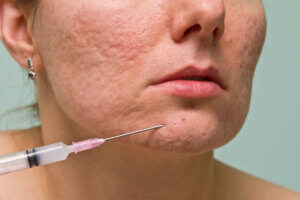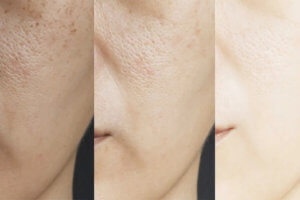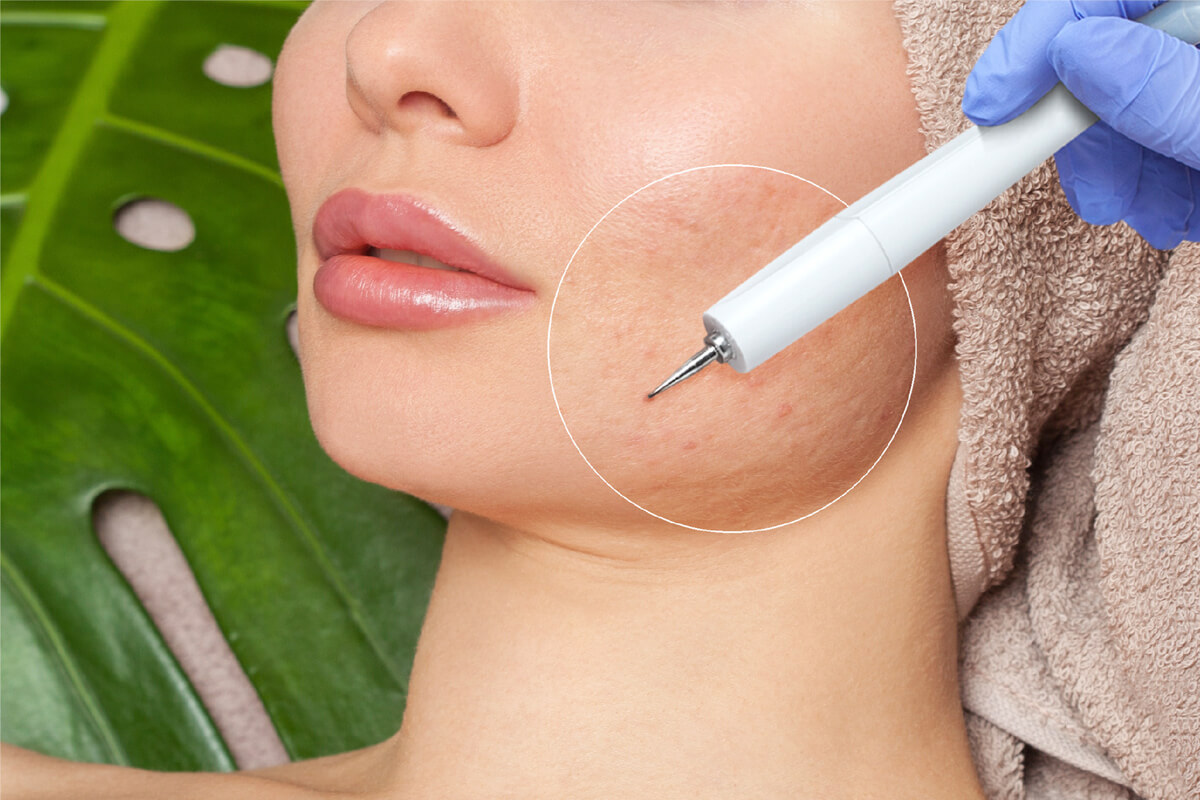Subcision
Let’s be honest, stubborn acne scars are stubborn indeed. It takes a lot of trial and error to treat and remove these scars. What if we told you there was another treatment worth considering? Consider Subcision.
A Subcision, which stands for subcutaneous incision surgery is a minor surgical procedure that treats deep skin scars and wrinkles. It is performed using a special hypodermic needle that is inserted through the skin surface. Breaking up the fibrous strands is done by the sharp blade of the needle that connects the scar to the underlying tissue. The fibrous strands release and the deposition of new collagen by wound healing result in cosmetic improvements in scarring. Subcision can be safely done on an outpatient basis and is usually well tolerated.
What Is Subcision?
The Subcision process itself helps lift the skin by breaking and releasing the fiber bundles that connect the scar to the underlying tissue. At the same time, the treatment itself may trigger new wound-healing processes and stimulate new collagen. Treatments that approximate non-surgical procedures usually require multiple treatments to achieve the desired outcome. However, the cost is much lower than using laser equipment.
 What are the benefits of Subcision?
What are the benefits of Subcision?
The benefits of Subcision are usually associated with reducing acne scars. Patients often resort to Subcision after trying hyaluronic acid-based dermal fillers that can be used to treat depressed acne scars such as ice pick scars and boxcar scars. Reducing scar tissue prevents new scars from forming around the pimple, ideally stopping the skin from forming in the first place.
- Improves skin texture
- Improves the appearance of rolling or depressed scars
- Promotes the production of new collagen
- Reduces scar tissue
What to do before a Subcision session?
It’s also important to consult a dermatologist before planning a procedure such as a Subcision, especially if you’re taking oral acne medications. Do not take blood thinners such as aspirin, alcohol, ginkgo biloba, or vitamin E before the session. The skin must be thoroughly cleansed before, as the needle is inserted through the skin and any cuts in the skin can cause infection. Subcision should not be performed in areas where infections or epidemics are active.
What happens during a Subcision session?
Patients should expect anesthesia during this procedure to minimize pain and discomfort. A small bifurcated needle is inserted under the surface of the skin. The needle is moved repeatedly from side to side under the scar for removing the scar from the underlying tissue. A faint crackling sound is heard when the skin fibers are torn. It will be repeated depending on the shape and size of the scar. Once the procedure is complete, cold compresses are applied to control bleeding and inflammation. This procedure is often followed by facial or filler treatments to further improve the scar.
 What to do after Subsicion?
What to do after Subsicion?
It is normal for the skin to be sensitive and painful during the first 24-48 hours. Patients can take over-the-counter antibiotics and anti-inflammatory drugs for ongoing pain and inflammation for 5-7 days after treatment. As with any procedure, avoid touching your face and keep your hands clean and disinfected. It’s important to wash the face twice a day with an antibacterial soap (for the first wash wait 8-12 hours). Apply sunscreen with SPF 30 or higher to protect your skin and prevent hyperpigmentation. It is important to resume acne treatment a few days after the procedure to prevent further breakouts. Check with your dermatologist for the exact schedule.
Considering Subcision for acne scars? There are a few points to take into consideration. Subcision cannot completely remove acne scars. However, this will reduce the shadowing of the skin as the scar will be less recessed. It’s also important to note that Subcision is not a replacement for acne treatment. Therefore, it is important to continue acne treatment as directed by a certified dermatologist to minimize the formation of new pimples and reduce the chance of scarring. For best results, repeat the Subcision process monthly with a laser and peel until the scar is completely gone. For a better experience, please don’t hesitate to contact us, in Vancouver or anywhere in Canada, we will provide the best services for you to feel refreshed and young again.
Subcision FAQs
HOW MANY SUBCISION TREATMENTS ARE REQUIRED?
Everyone has a different ability to form collagen (scar tissue). The number of subcutaneous resections required to correct depression depends on the type, location, severity, and intensity of treatment of depression. For moderate scarring, 3-6 visits are usually sufficient. In general, it is recommended that treatments be spaced at least one month apart.
HOW SUBCISION IS PERFORMED?
- The treatment area will be cleansed by removing dirt and makeup
- Scar margins will be defined using surgical markers, and overhead lighting adjusted to outline the pit will be used.
- Local anesthetic is used
- The needle is inserted next to the scar at an acute angle, with the bevel facing up and parallel to the surface of the skin. Smaller gauge needles can be used for small superficial scars and wrinkles.
- The needle advances through the dermis and is fanned back and forth. A crackling sound is heard when the fibrous bands are cut into the deep dermis and the deep subcutaneous surface of the dermis.
- The needle is rotated 90 degrees and re-fanned into the skin scar (fanned Subcision).
- The needle will be removed and pinched around the exit site to prevent bleeding from forming a large hematoma.
- Apply manual pressure to the wound for a few minutes.
HOW LONG IS THE HEALING FROM THE SUBCISION?
On average, recovery after Subcision acne scar treatment takes about 10 days. During this time, patients may experience redness and pigmentation changes. These effects can be masked with makeup and will disappear at the end of the recovery phase.
WHAT PRECAUTIONS SHOULD I TAKE AFTER A SUBCISION TREATMENT?
Avoid touching the treatment area with your fingers for the first 24 hours unless you are cleaning it. Touching the treated area with bare hands can cause infection. If you have had a facial Subcision, you can resume your normal face wash and shower after 8-12 hours unless otherwise indicated.


